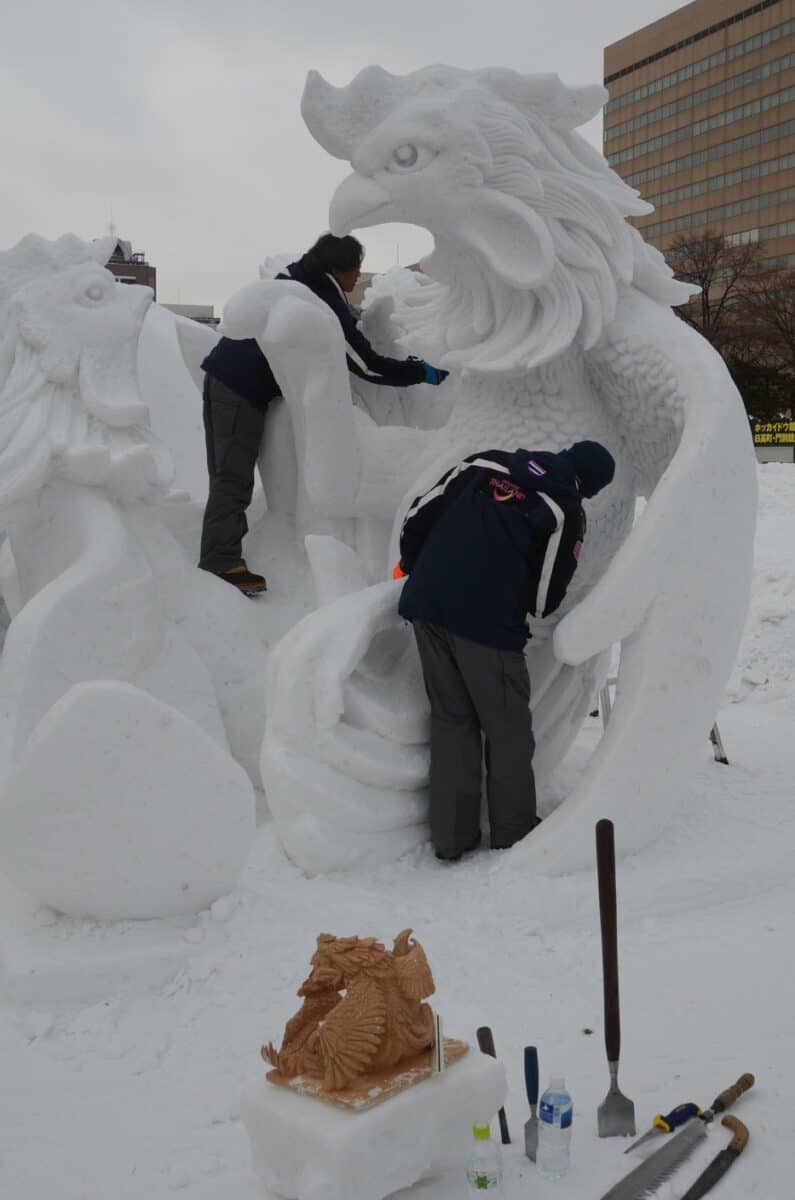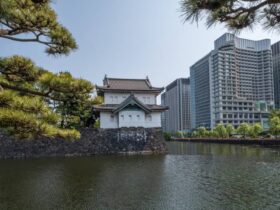The Sapporo Snow Festival began as a one-day event in Odori Park when six local high school students created six snow sculptures. The first large snow sculptures were created in 1955 by the Japan Self-Defense Forces from the neighboring Makomanai base, for which the Snow Festival is now famous.
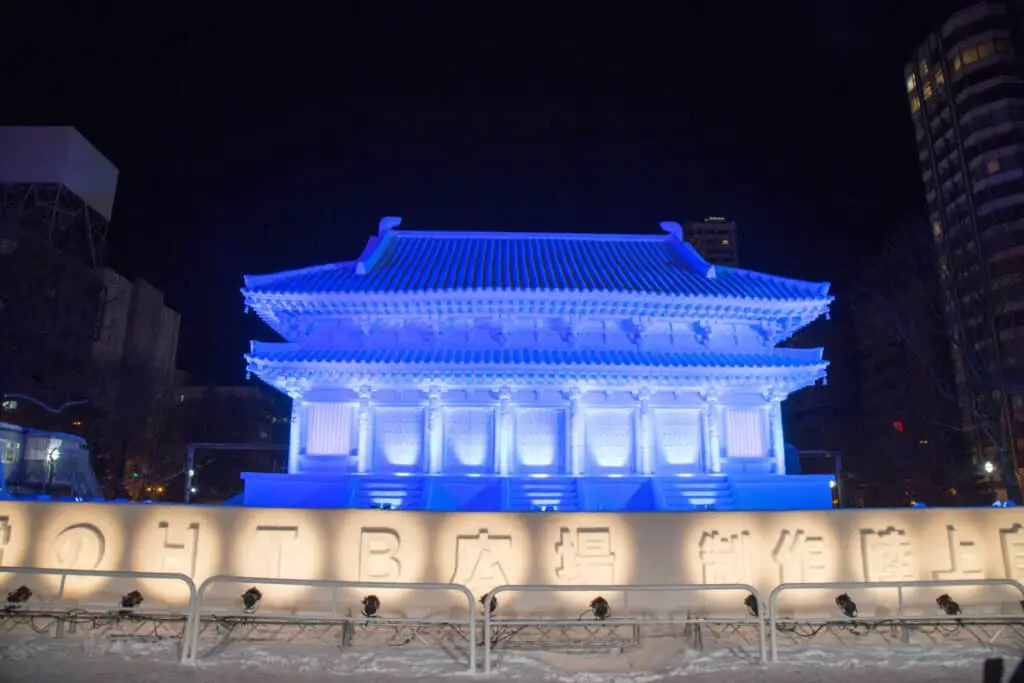
Annually in early February, the Sapporo Snow Festival is held over three main sites: Odori Park, Tsudome, and Susukino. Every year, up to two million people attend the snow festival. The event is free to the public.
Every year, the Sapporo snow festival has experienced a rise in the number of events, snow sculptures, and spectators. During the 1972 Winter Olympics, it received worldwide publicity. It’s now a celebration of art, winter sports, regional cuisines, and Sapporo’s links to cities all over the world.
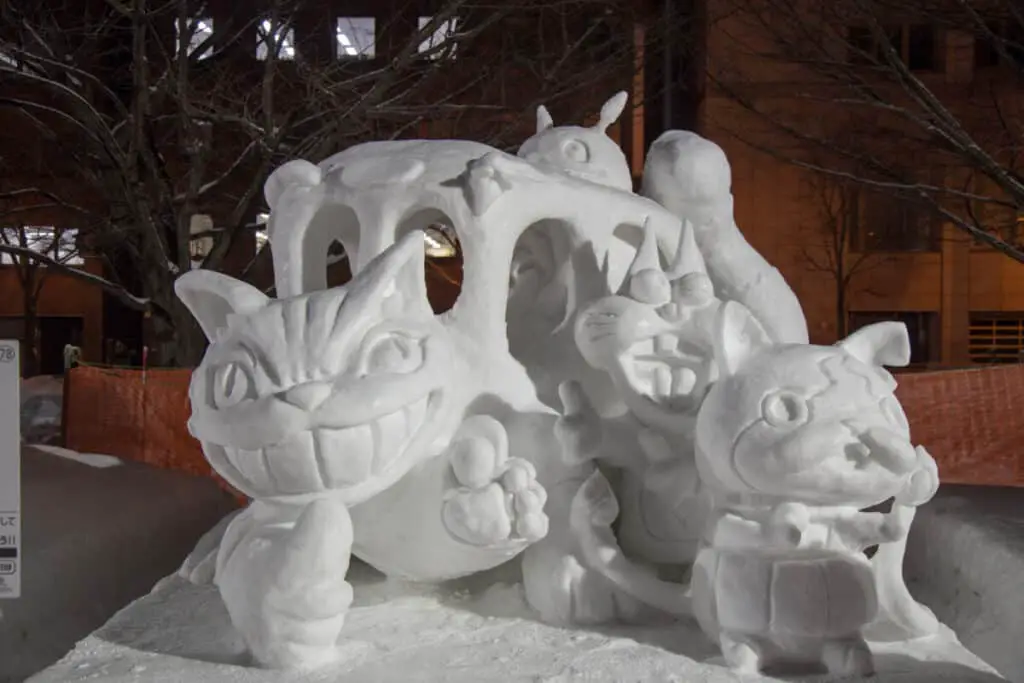
What happens at the Snow Festival
Traditional Japanese festival foods are available, such as yakitori chicken skewers, okonomiyaki pancakes, and takoyaki octopus balls, but because Sapporo is known for its seafood, the specialty dish most often seen is crab nabe hot-pot.
Sapporo is northern Japan and thus winters are very cold and often this region has large amounts of snow and temperatures drop drastically at night.
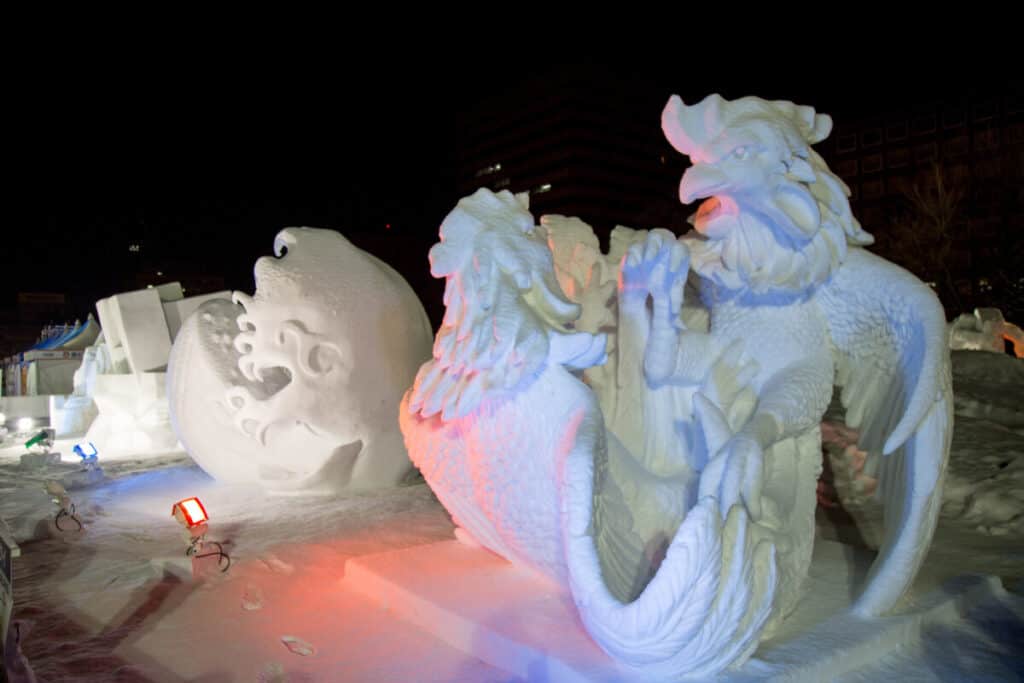
Be prepared for low temperatures and cold. What should you bring with you on the trip to the snow festival?
Thermal underwear, a sweater, and a thick overcoat, or proper winter clothing, such as a ski jacket, are typical examples. It’s also a good idea to wear a knitted cap, ear-warmers, and gloves. To get the most out of the snow festival, make sure you dress warmly.
Warm nonslip boots are a must since there is lots of snow and regular type of shoes quickly can become wet and provide little defense against the cold.
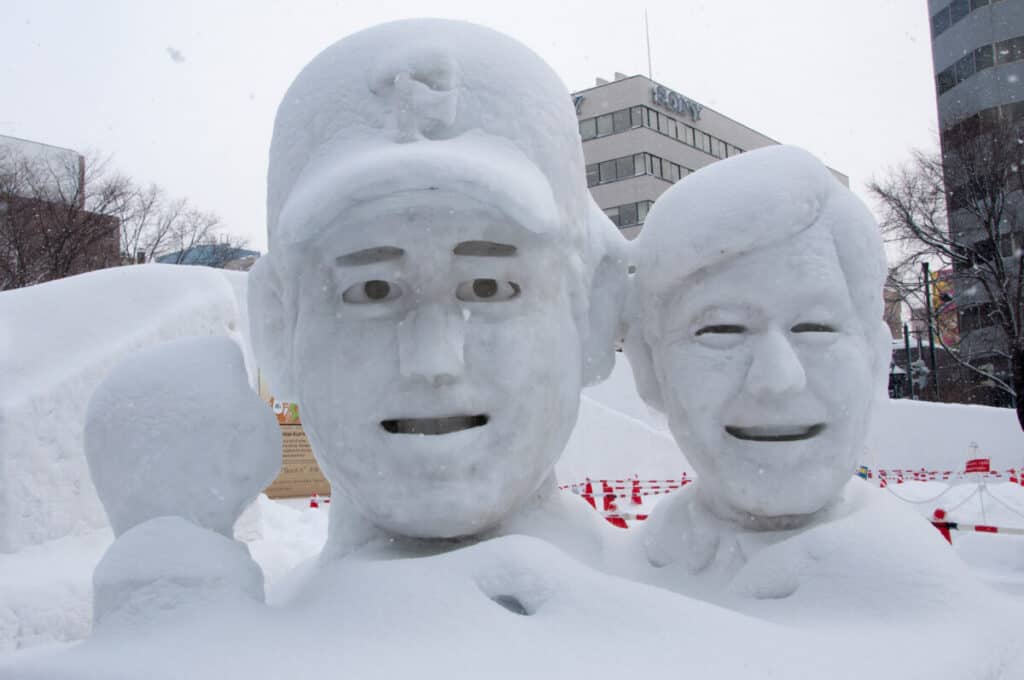
Hundreds of snow statues and ice sculptures in the Odori Park and Susukino locations in central Sapporo, as well as the Satoland site, drew almost two million visitors. An International Snow Sculpture Contest is conducted at the Odori Park location, with numerous teams from all over the world participating.
The theme of the snow sculptures varies, but it frequently depicts a previous year’s event, famous structures, or people. Stages made of snow are also built, and activities such as musical concerts are conducted there.
Visitors to the Satoland location can enjoy extensive snow and ice slides as well as a massive snow maze.
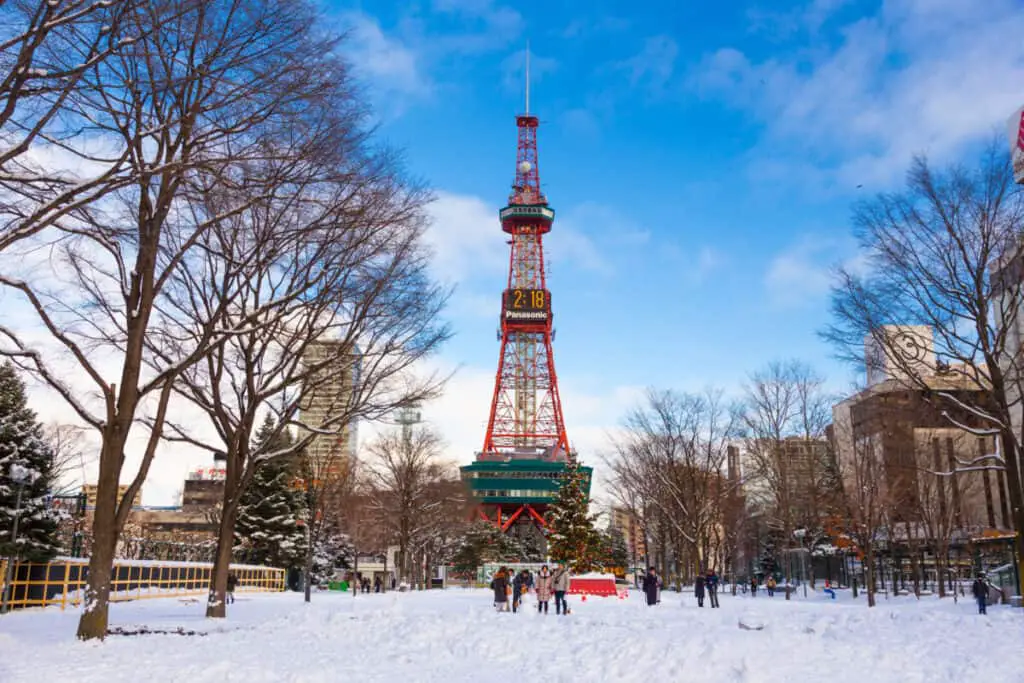
The Sapporo TV Tower, located near the eastern edge of Odori Park, offers spectacular views of the Odori Site. During the event, the tower has extended hours and is open until 10:30 p.m.
Adult’s admission is 720 yen to enter the top observatory deck. A ticket for 1100 yen permits you to both a day and a night admission.
Susukino Site
About a hundred ice sculptures are on display at the Susukino Site, which is located in and named for Sapporo’s main entertainment area. Susukino is a subway station one stop south of Odori Park. The ice sculptures are illuminated until 11 p.m. every day of the festival.
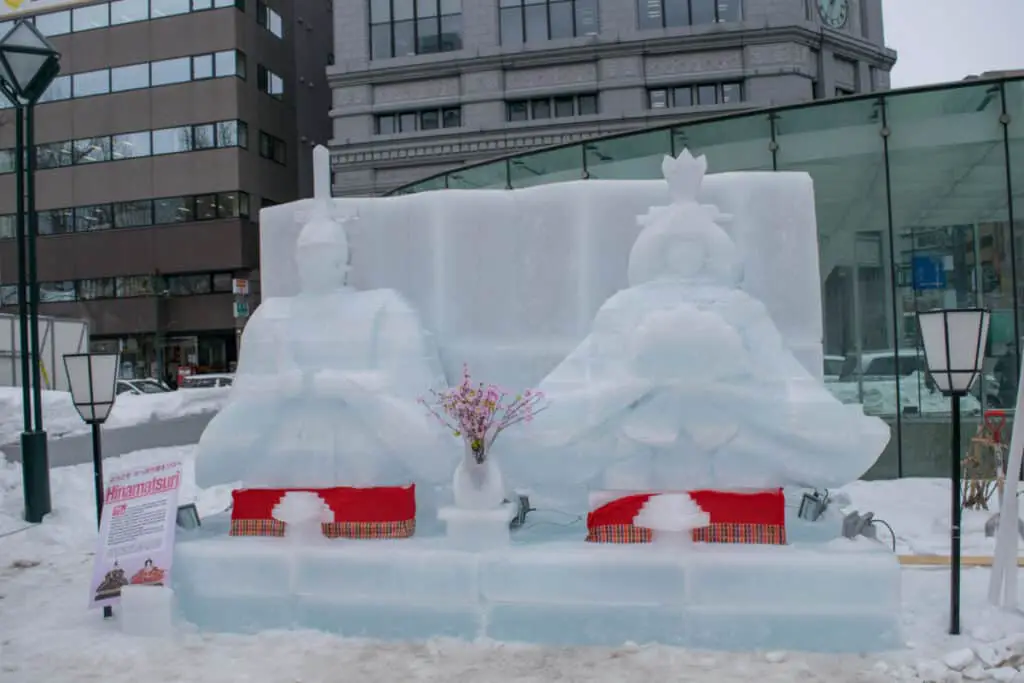
Tsu Dome Site
With three varieties of snow slides, snow rafting, and more snow creations, the Tsu Dome Site is ideal for families with children. There are several food stalls and a stage for activities within the dome. During the event, the Tsu Dome Site is open daily until 5 p.m.
Odori Site
The Odori Site is located in the heart of Sapporo, along the mile-long Odori Park. There are some of the festival’s most famed enormous snow sculptures on display, some of which are more than 80 feet wide and over 50 feet tall.
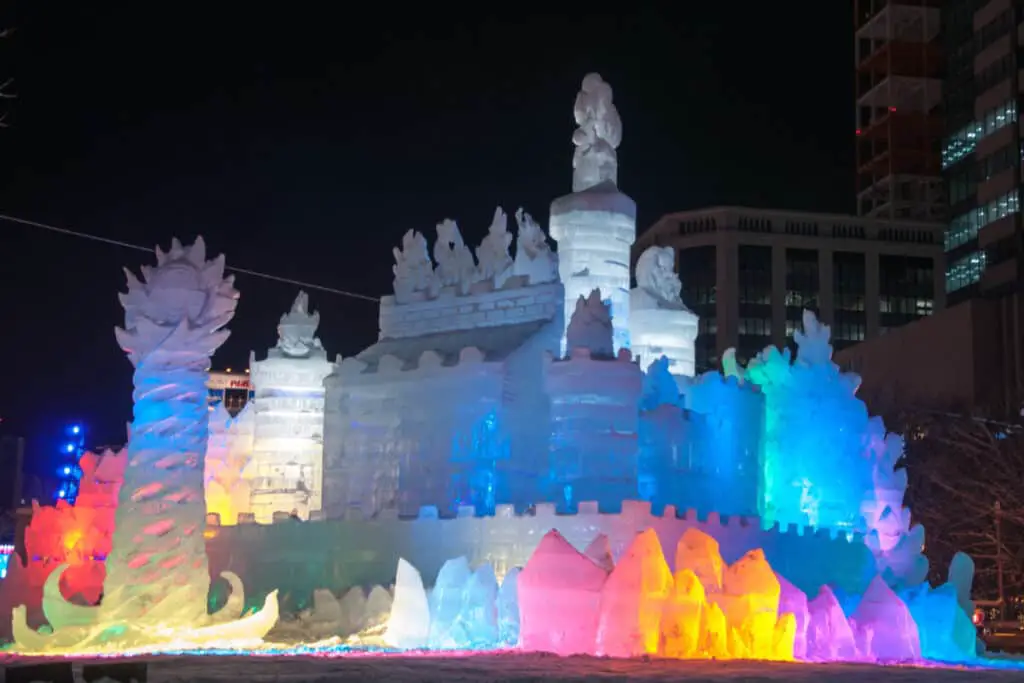
They are brightly lit and a sight to behold against the snowy landscape. The Odori site area is open every day until 10 p.m.
How many snow sculptures are there?
The total number of statues shown each year is about 400. In recent years, 307 sculptures have been erected in the Odori Park site, 32 at Satoland, and 100 at Susukino.
Best way to reach the Sapporo snow festival
Shuttle buses departing every five to ten minutes from the Odori Site and Sapporo Station will take you to the festival. Sakaemachi Station is a 15-minute walk away. To get to this stop, use the Toho Subway Line from Sapporo Station.
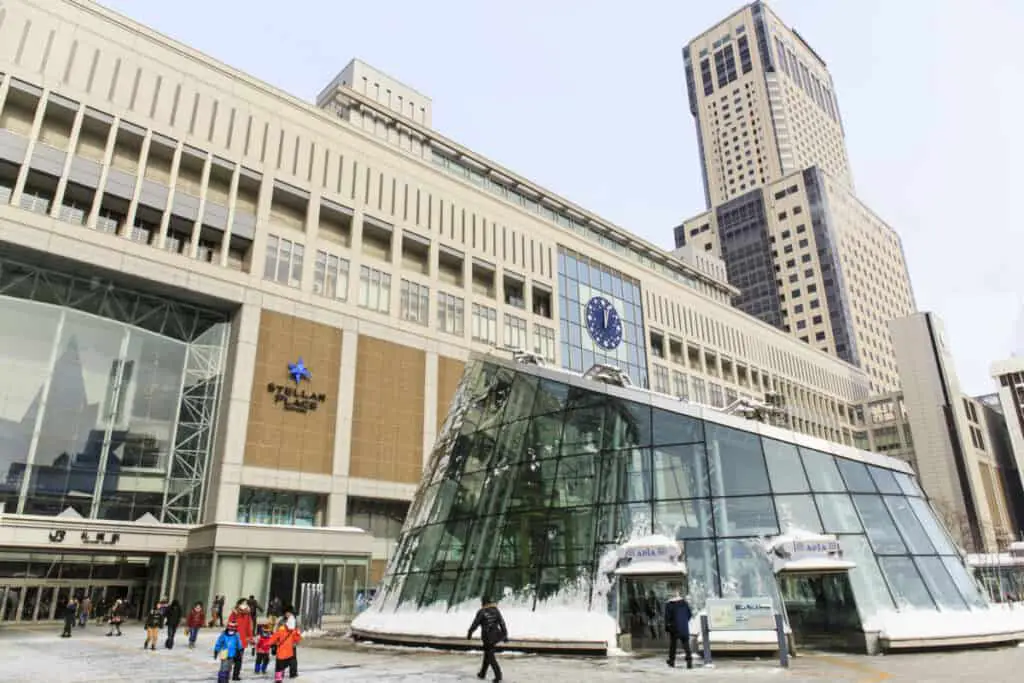
How to travel from Tokyo to Sapporo
Travel from Tokyo to Shin-Hakodate-Hokuto for approximately 4 hours on the JR Tohoku/Hokkaido Shinkansen, then transfer to the Hokuto limited express to Sapporo for about 3.5 hours.
The trip costs approximately 29,000 yen one way and lasts around eight hours. The Japan Rail Pass and the JR East-South Hokkaido Rail Pass both cover it fully.
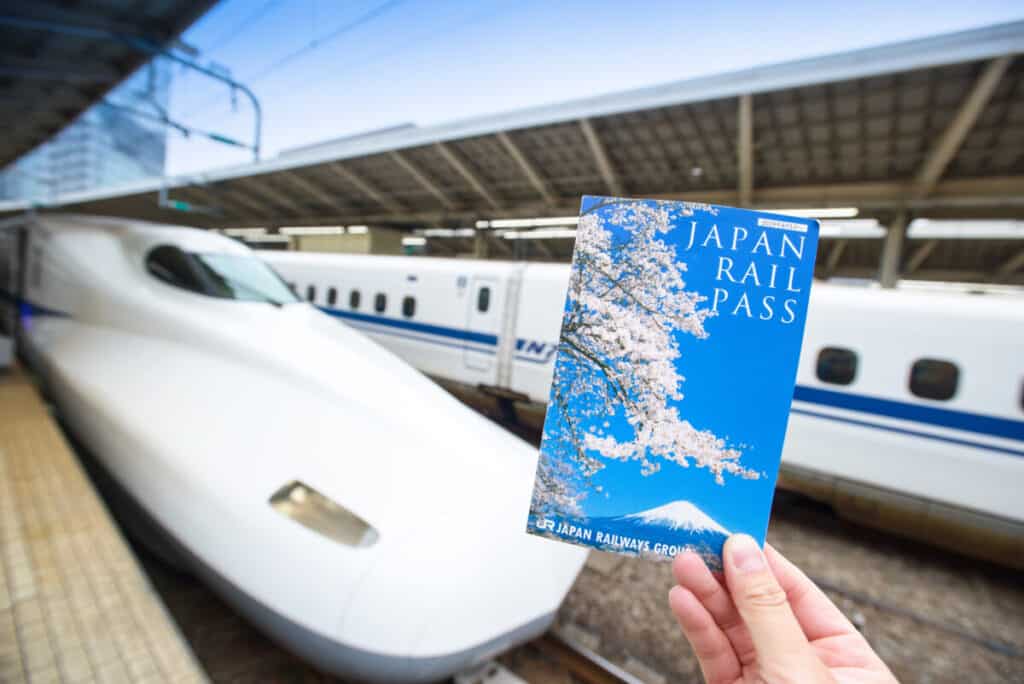
Sapporo Snow Festival Accommodations via Tripadvisor
The Sapporo Snow Festival features a variety of activities for everyone to enjoy, including a skating rink, a snow slide, and a ski-jump performance. Live performances by bands and vocalists.
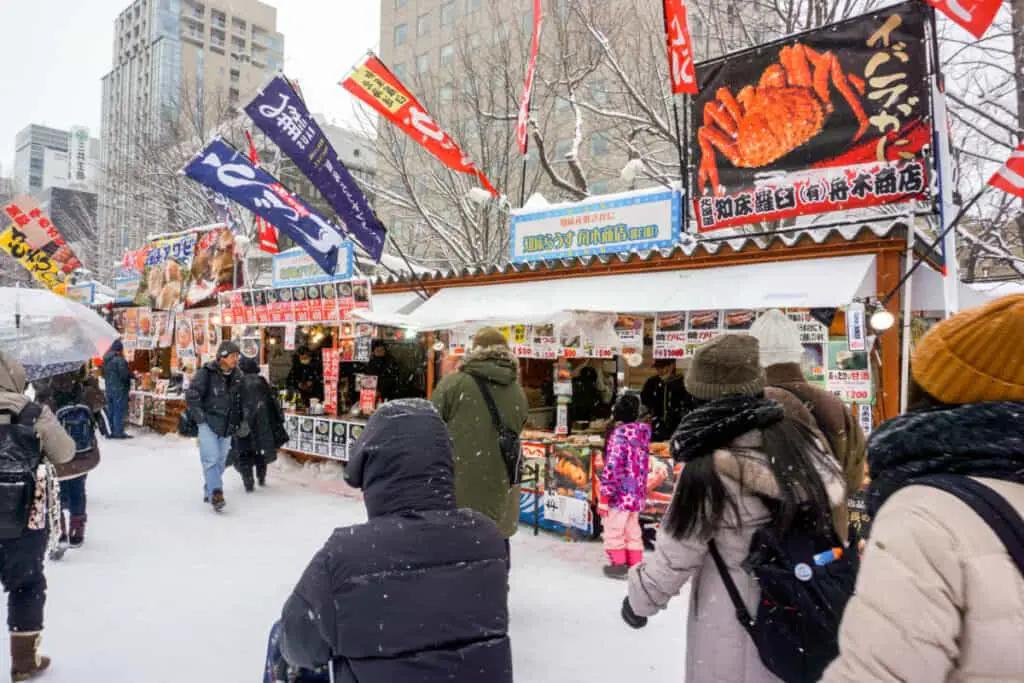
Dozens of food vendors with hot foods and drinks. Wander thru the area and admire the incredible talent of the snow sculptors.
Enjoy ice skating by day and watch the amazing light shows around the area by night. Other events enjoyed in the area are sledding and snowmobile rentals.
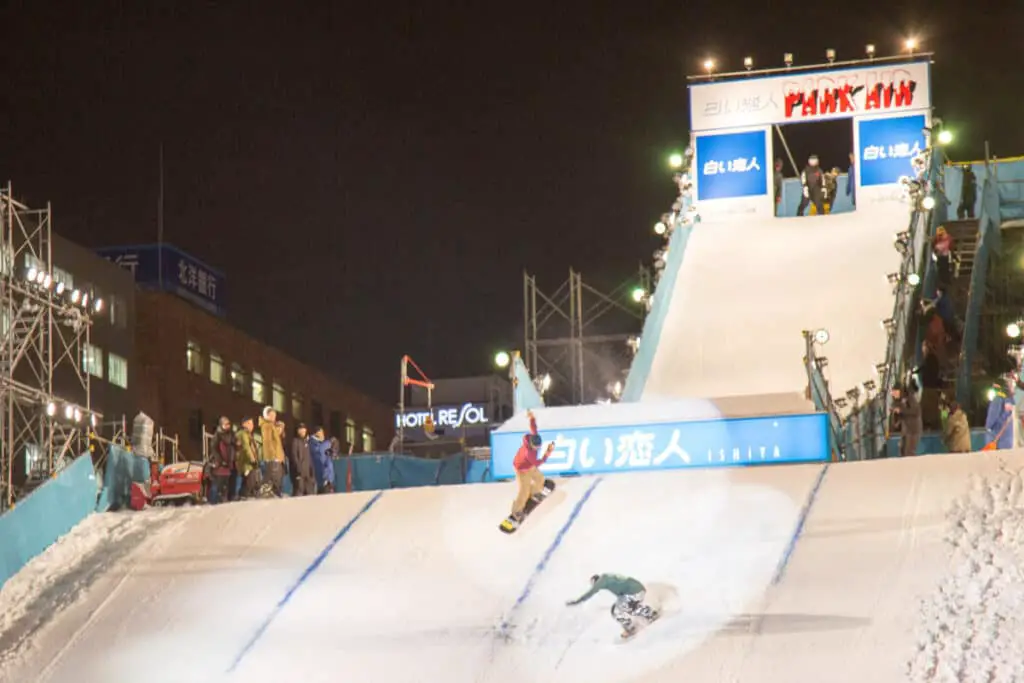
Finishing up with a night at an Onsen (Japanese hot spring inns) or possibly a few nights at a traditional ryokan.
There is so much to see in do during Sapporo’s snow festival it’s hard to see everything in just a day so planning a multi-day trip is a great idea.

